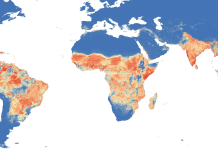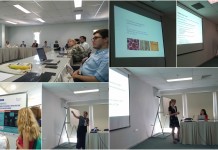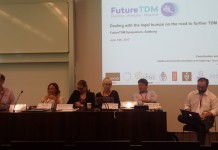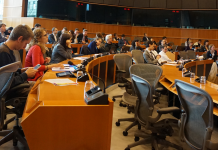This blog post was originally published on the Kluwer Copyright Blog on September 15, 2016.
Recently, the Commission published a draft of the Commission’s impact assessment “on the modernisation of EU copyright rules” and a draft for a new directive “on copyright in the Digital Single Market” were leaked. Yesterday, the Commission launched the long-awaited proposal for this directive, which includes an exception for reproductions made by research organisations to carry out text and data mining (TDM) for scientific research purposes. One of the crucial aspects for the scope of this exception, and the main question for this blog post, is: who is going to benefit from this exception? Therefore, I will first take a closer look at the impact assessment to see why the Commission chose to (only) exempt research organisations. I will compare this with the proposed directive to see who the actual beneficiaries of the exception are and whether this reflects the Commission’s initial intentions.
In its impact assessment, the Commission considers several variations of TDM exception. The most extreme option exempts any reproduction made through text and data mining (TDM) for the purpose of scientific research. Such a broad exception would be very ambitious for the Commission. The other two options are basically a trade-off between either restricting the scope:
- to non-commercial (scientific research) purposes, or
- to a specific group of beneficiaries: public interest research organisations who carry out TDM for scientific research purposes.
The Commission considered that the non-commercial requirement would generate too much uncertainty as to the applicability of the exception in the case of research carried out within public-private partnerships. Such legal uncertainty exists in relation to the current research exception of the Copyright Directive, as shown by a FutureTDM report. Therefore, the Commission would prefer to restrict a TDM exception by its beneficiary: research organisations. It explicitly points out that universities and research institutes are covered by this concept.
The problem with the current research exception is that research for commercial purposes is excluded from its scope, causing uncertainty for research institutions in public-private partnerships (PPPs). It is therefore promising that the impact assessment points out that research organisations also covers research projects carried out within the framework of those PPPs. That way, academic researchers could be certain that their TDM activities are lawful, without worrying about their purposes – which are not always pre-determined in academia. Whether research would afterwards be commercialised to some extent would therefore not be relevant. And this is not rare in a political climate where valorisation of research is increasingly encouraged.
Barely one week after the leak of the impact assessment, a draft for a new directive “on copyright in the Digital Single Market” was leaked. As in the final proposed version of the directive, it includes a TDM exception according to the preferred delimitations as set out in the impact assessment. There is a slight difference as regards the beneficiaries: it states merely research organisation instead of public interest research organisations. For the remainder, there is nothing new at first sight. However, a quick glance at recital 11 of the proposed directive tells a different story. It expands on the scope of the exception’s beneficiaries: research organisations “encompass a wide variety of entities and include those whose primary goal is to conduct scientific research or to do so together with the provision of educational services”.
Universities and research organisations as such are not named as possible beneficiaries, but it is beyond doubt that they alone can still benefit from the exception. Further, research organisations engaged in PPPs are explicitly recognised as being among those to reap the benefits from the exception. The Commission further mentions that “despite different legal forms and structures, research organisations [..] act either on a not for profit basis or in the context of a public-interest mission recognised by the state”. The latter could possibly be reflected through public funding. It is conceivable that PPPs are considered to be such public-interest missions, since they are commonly used to leverage public funding.
However, recital 11 then tells us that organisations where commercial undertakings have a “decisive influence”, which may result in preferential access to the research results, should not be considered research organisations. This potentially excludes a large portion of the PPPs, depending how this will be interpreted in practice. It is common in PPPs that parties agree that foreground IP rights are vested in – or transferred to – the private party in the collaboration. What is generally left for the university or research institution is a right to publish on the research findings and to use foreground in its further research. In short, the ‘private’ party is in it for the commercial use of the results; the ‘public’ party is in it for the research itself – the public interest. From a commercial perspective, the commercial undertaking has preferential access to the research results. Does this mean that such PPPs will therefore not be covered by the TDM exception? If that is the case, most PPPs might not benefit from the exception. De facto, this may result in an exception merely for non-commercial purposes.
The final statements in the preamble of the proposed directive do not seem in accordance with the broad promise of the impact assessment. This – already too narrow – TDM exception risks lacking practical relevance, since more and more (TDM) research will be carried out in PPPs. A further clarification of “research organisation” is highly desirable to prevent too many PPPs from falling by the wayside. If the Commission really wants to “stimulate innovation, creativity, investment and production of new content […] in the digital environment” in Europe (recital 2), it should take its TDM exception much more seriously. The future and economy of our information society relies on technologies, such as TDM, that extract (unprotected!) knowledge from works and other data. The beneficiaries (what about data-driven journalists?!) and scope of copyright – and database law – should be reconsidered on a more fundamental level. Exempting beneficiaries bit by bit in rare instances of copyright reform is not going to do the job…
// All blog posts are the personal opinion of the bloggers. For more information see FutureTDM'sDISCLAIMER on how we handle the blog. //













